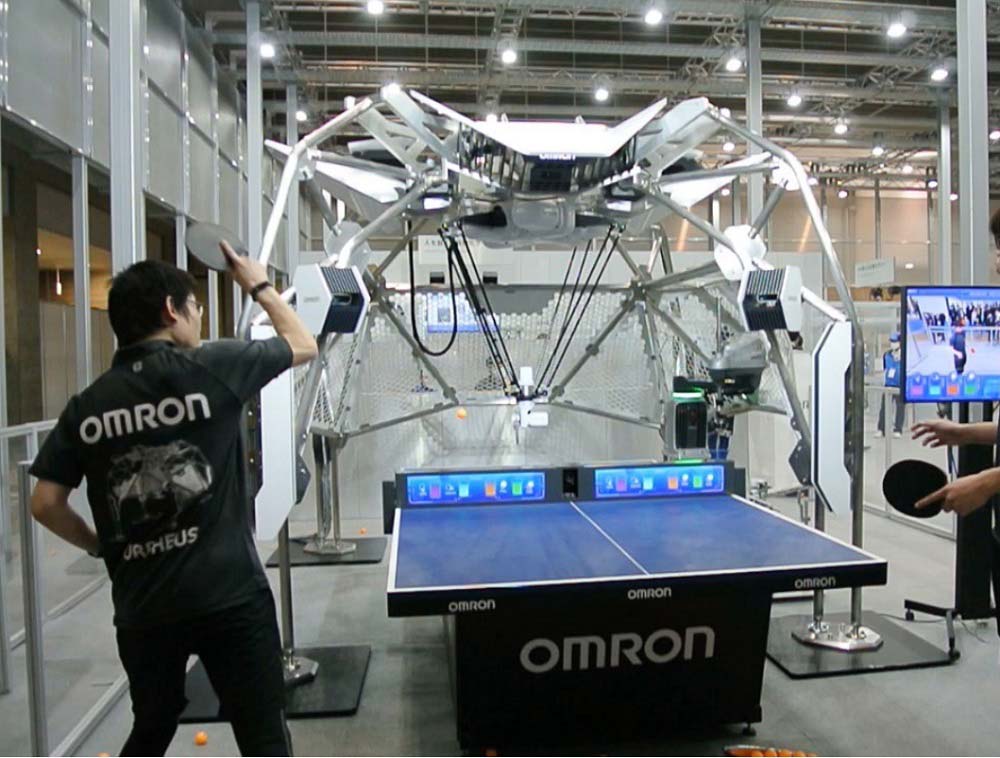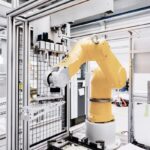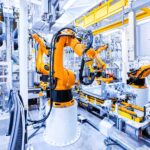ASIA ELECTRONICS INDUSTRYYOUR WINDOW TO SMART MANUFACTURING
OMRON Strategy Boosts Proven Harmony of Man, Machine
OMRON Corporation has set fourth its goals to promote the coherence of human and machine in the manufacturing floor. Specifically, the goal is to maximize each other’s potential, which is part of its medium- and long-term plan.
Moreover, the company puts strengthen into the deployment of solutions based on its core technologies, “Sensing & Control + Think”. The company was able to showcase this at the recent International Robot Exhibition 2022 (iREX2022) held in Tokyo, Japan. At the event, OMRON proposed a manufacturing site that maximizes the potential of humans and machines, including a world’s first technology.
Four Core Businesses
OMRON’s booth was standing out on the exhibition venue for its size. Near the entrance, the latest seventh-generation table tennis robot FORPHEUS, attracted visitors’ attention. It incorporates cutting-edge technologies and functions that enhance the players’ performance. In fact, the design of the robot embodies the straightforward harmony between human and machine.
The medium-term management plan sets four core businesses: control equipment, healthcare, social system, and electronic components. Omron aims to solve social issues through these businesses.

Particularly, in electronic components manufacturing, the company enables the manufacture of new products that control direct current safely and stably connect high-frequency signals.
This is in anticipation of the increasing demand for high-functional devices, reflecting the shift to DC to reduce environmental load through use of renewable energy. The company also expects the support of high-speed communication accompanying the progress of digitization will also help increase the demand for high-functional devices.
Innovations in Control Equipment
Likewise, OMRON also sees changes in the control equipment business as opportunities for growth. These changes include the build-up of production capacities and the trend toward ultrafine circuits, electrification of mobility, reduction in plastics use, traceability of pharmaceutical products, and the automation of logistics. Hence, the company considers all these changes have common challenges, such as energy efficiency, labor shortages, and easy-to-work production sites.
On this understanding, OMRON has been strengthening its application business to materialize innovative-Automation, or i-Automation! concept. The company deploys more than 230 applications that solve customers’ issues. In addition, it also plans to increase the number of global engineers to over 2,000, increasing 30 percent from the current number.
OMRON sets three areas as key pillars of applications.

Let machines do what can be done: Automation beyond human abilities
The company aims to innovate workplaces where people can engage in creative work with peace of mind, by automating the manual work which has been relied on people. This is possible by making full use of robotics technologies based on high-speed and high-precision control application technologies. The company also proposes the automation of works previously relied on skilled workers and people as well.
People can extract their full potential: Advanced collaboration between people and machines
While promoting the automation to replace workers where appropriate, OMRON aims to have people remain in the central roles in manufacturing. For this reason, they can maximize their potential, enjoy self- growth, and job satisfaction. In this area, the company targets to create a solution wherein people can leave simple operations to robots, which assist human proficiency, and workers and robots can compensate each other flexibly according to the situation.
Digital engineering transformation
Robot integrated controller and software enable the start-up of facilities in remote locations and correction of abnormalities from remote locations. The use of digital twin in high precision enables the merger of offline and online space.
Amid restrictions on movements and access to production floors amid the pandemic, virtual technology-based simulations and remote monitoring have played significant roles in the maintenance of manufacturing workplace. The company has in mind this fact in promoting digital engineering transformation.




